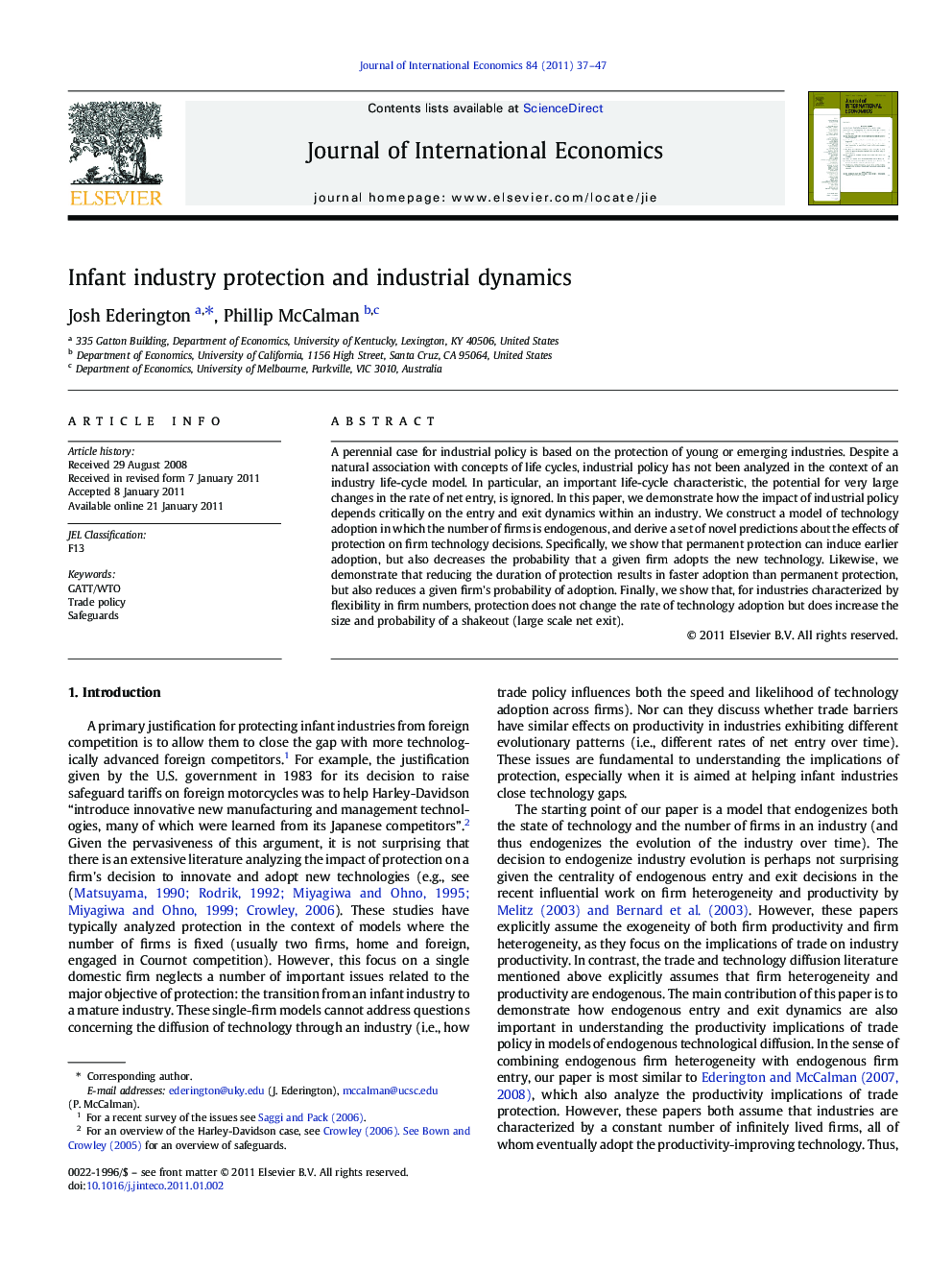| Article ID | Journal | Published Year | Pages | File Type |
|---|---|---|---|---|
| 963075 | Journal of International Economics | 2011 | 11 Pages |
Abstract
A perennial case for industrial policy is based on the protection of young or emerging industries. Despite a natural association with concepts of life cycles, industrial policy has not been analyzed in the context of an industry life-cycle model. In particular, an important life-cycle characteristic, the potential for very large changes in the rate of net entry, is ignored. In this paper, we demonstrate how the impact of industrial policy depends critically on the entry and exit dynamics within an industry. We construct a model of technology adoption in which the number of firms is endogenous, and derive a set of novel predictions about the effects of protection on firm technology decisions. Specifically, we show that permanent protection can induce earlier adoption, but also decreases the probability that a given firm adopts the new technology. Likewise, we demonstrate that reducing the duration of protection results in faster adoption than permanent protection, but also reduces a given firm's probability of adoption. Finally, we show that, for industries characterized by flexibility in firm numbers, protection does not change the rate of technology adoption but does increase the size and probability of a shakeout (large scale net exit).
Keywords
Related Topics
Social Sciences and Humanities
Economics, Econometrics and Finance
Economics and Econometrics
Authors
Josh Ederington, Phillip McCalman,
